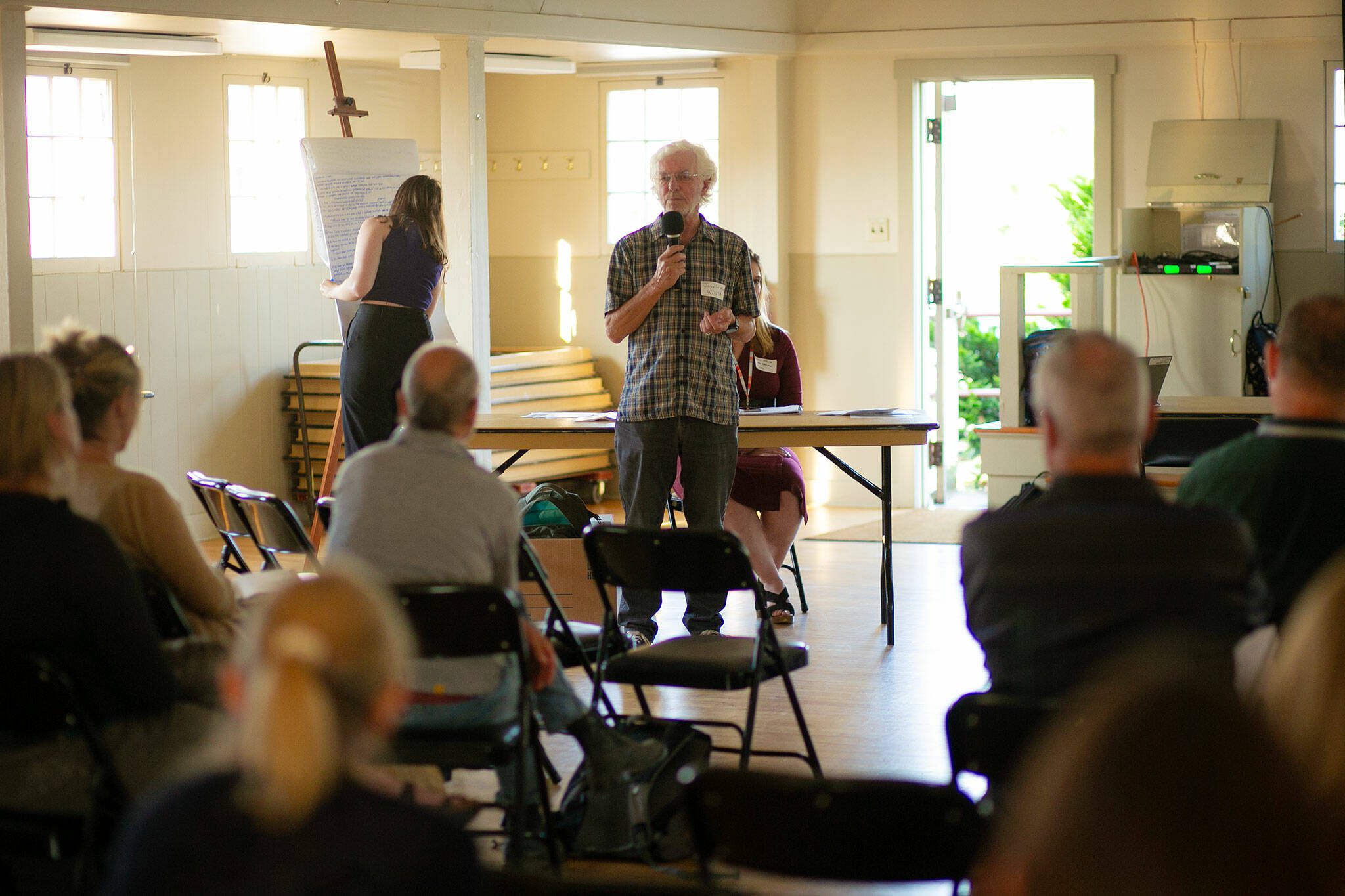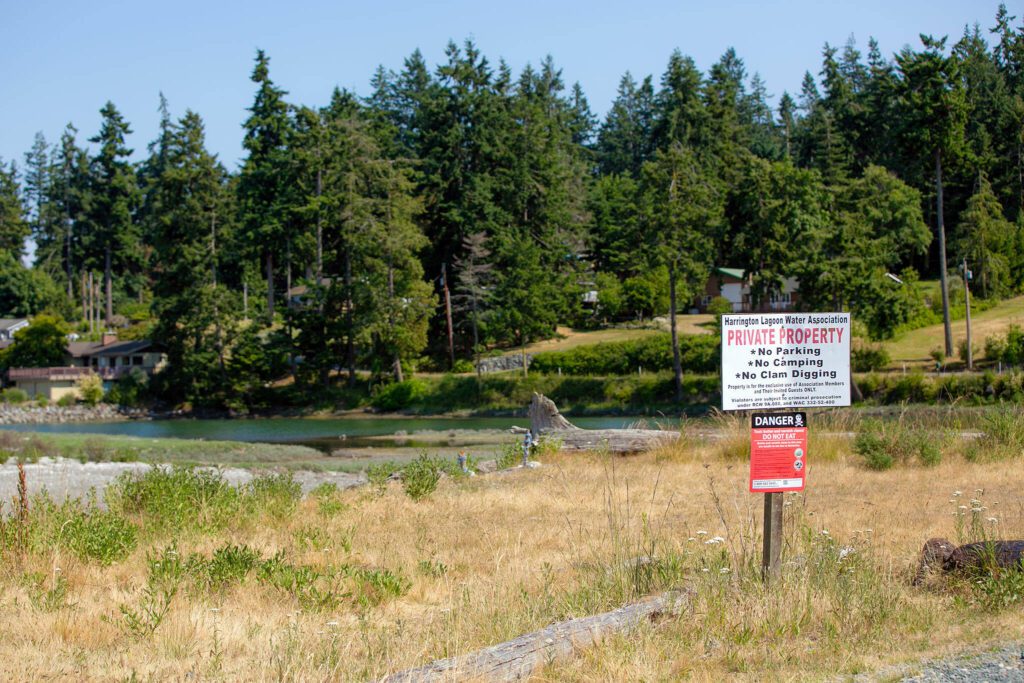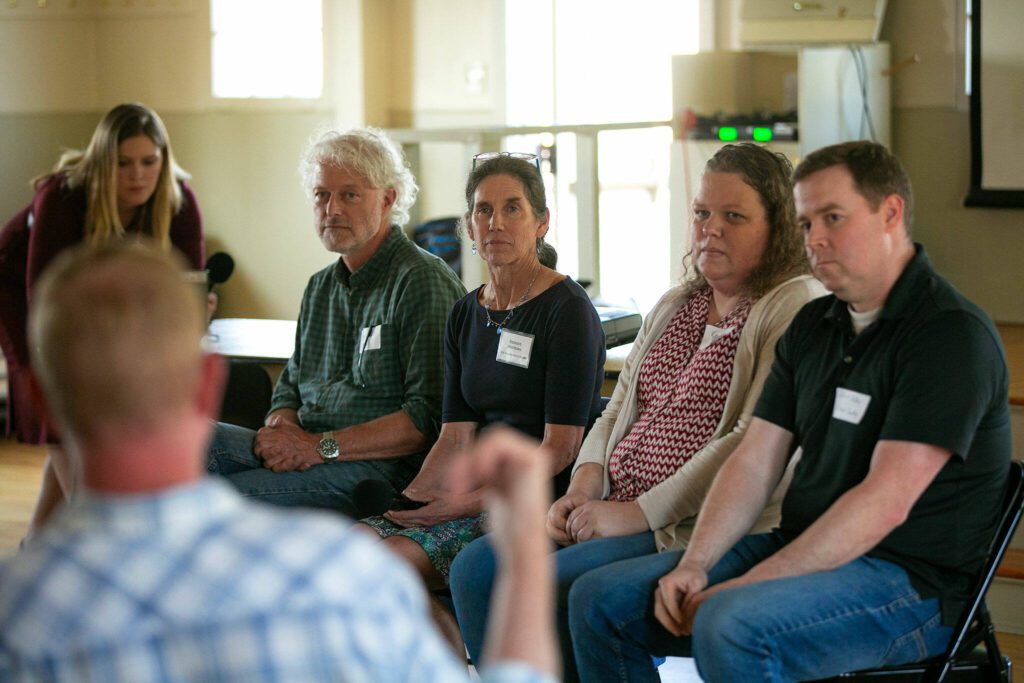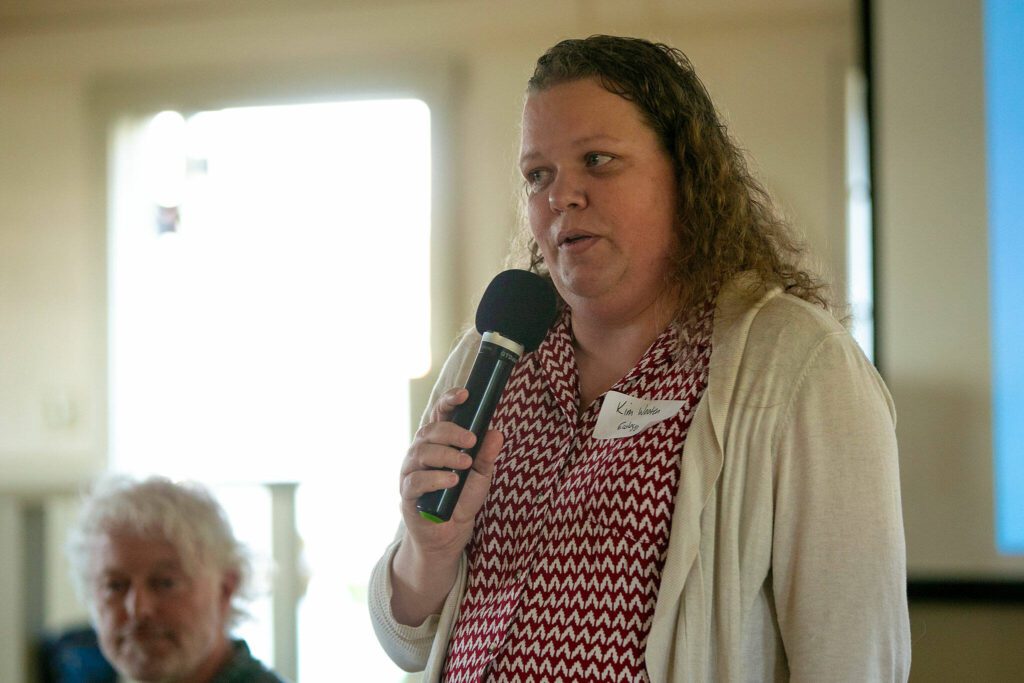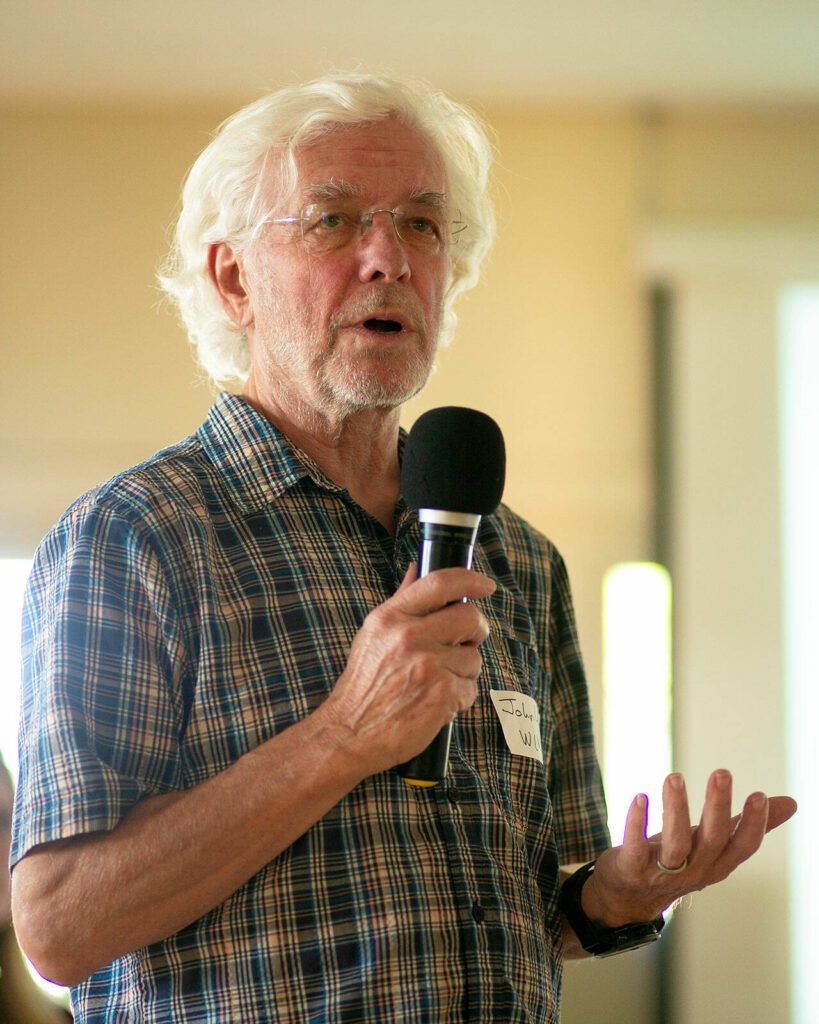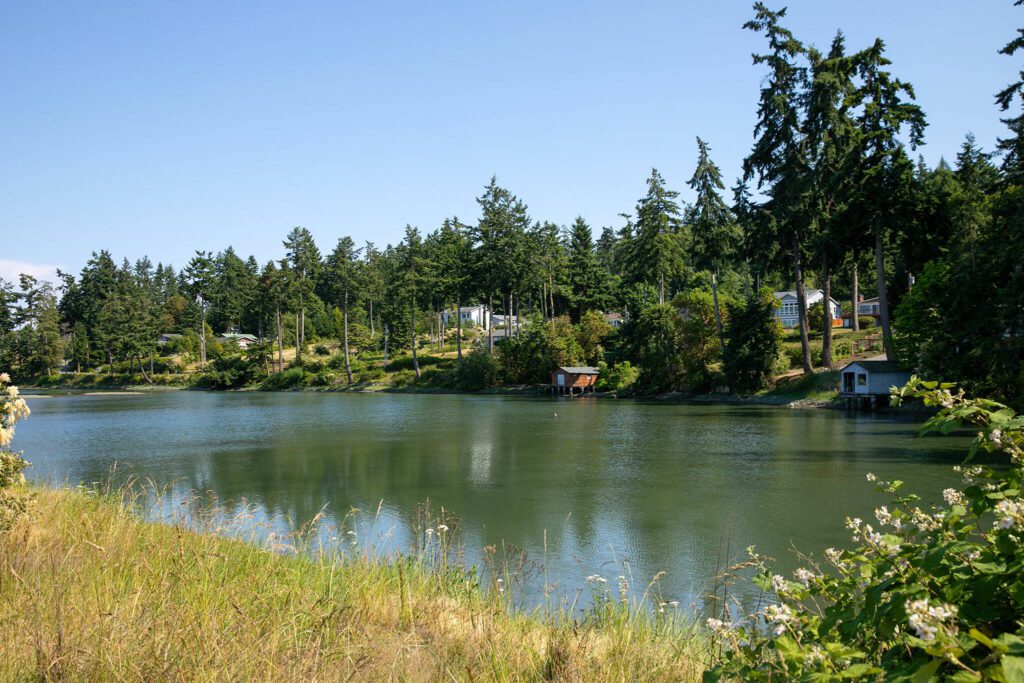COUPEVILLE — For as long as she can remember, Tamara Ross’ family hasn’t liked the taste of drinking water at Harrington Lagoon.
So they’ve always brought bottled water to their vacation homes in the idyllic community east of Coupeville on Whidbey Island. The family has owned property there since 1955. They now have three homes right next to each other.
“I love it,” said Ross, who goes there about once a month. “It’s our slice of heaven.”
But about a year and a half ago, the water company alerted her and her neighbors to the presence of so-called “forever chemicals” in the drinking water.
The dangerous per- and polyfluoroalkyl substances, or PFAS, can cause health defects, including cancer, lower birth weights, increased cholesterol levels and decreased vaccine response in children.
The main source of drinking water contamination across the country is aqueous film-forming foam, long used in firefighting training.
Harrington Lagoon is the first community in Snohomish or Island counties to report PFAS levels in drinking water above state action levels, other than longstanding issues at Naval Air Station Whidbey Island. The results come as the chemicals have emerged in recent years as a major health concern ubiquitous in consumer products for decades. The extent of contamination in drinking water nationwide remains to be seen.
John Lovie, the director of the Whidbey Island Water Systems Association, has been clued into PFAS for years as he has followed the developments at the air base north of Oak Harbor. So he wasn’t surprised with the Harrington Lagoon results.
“It’s like the other shoe dropping, finally,” he said.
Testing also found the persistent chemicals in wells near Mabana Beach on the southwest side of Camano Island and Deer Lake near Clinton, though none exceeded levels set by the state for cleanup. However, some PFAS compounds discovered in the water at those sites don’t yet have recommendations for when to take action.
The contamination at all three of these sites pales in comparison to others in Washington, including a well on San Juan Island that tested 164 times the levels the state considers safe. By comparison, testing at Harrington Lagoon determined one of the compounds, PFOS, exceeded the state’s levels by just over five times.
“It’s a little less of an emergency situation,” said Kim Wooten, of the state Department of Ecology’s toxics cleanup program.
Meanwhile, sampling at other Island County sites found little to no PFAS in the drinking water.
In Snohomish County, the chemicals are also suspected in naval facilities and at Paine Field. A 2021 report found one spot at Naval Station Everett and six at the Jim Creek radio station in Arlington. The waterfront naval base has a history of using firefighting foam that contains PFAS, but testing in late 2021 found no sign of the chemicals in drinking water.
And at Paine Field, a fire system mishap at a Boeing facility may be to blame for confirmed contamination of the soil at the south end of the county-owned property.
In May, the state launched a new dashboard tracking PFAS testing in drinking water. A 2021 rule requires more than 2,400 public water systems across Washington be tested for the chemicals by 2025. About a quarter of that testing had been done at the time of the launch.
In Snohomish County, about 30 water systems have been tested. Three turned up the presence of PFAS, in Priest Point on the Tulalip Reservation, in a community north of Lake Stevens and near Kackman Creek east of Stanwood. All of those results, in water systems that serve about 700 total residents, were well below levels set for cleanup.
Dozens of local water systems still need to be tested.
‘How do you really hold them liable?’
A few miles from Coupeville, the Harrington Lagoon community sits low, near the water on the east side of Whidbey Island.
Large homes with long driveways curl around the lagoon, paired with more quaint houses along the water that resemble summer homes and Airbnbs. The homeowners association has about 40 members, said Erik Anderson, who bought a vacation home on the lagoon in 2011.
Anderson likes to go crabbing and fishing, and it’s close to Seattle, so he goes up most weekends. During COVID, it was weeks on end.
The vice president of the neighborhood water association, Anderson has been trying to stay educated about PFAS for a few years after hearing about the contamination at the naval station in Oak Harbor. So he figured there might be issues in his water, but when he saw the results, he was “surprised that it was so high.”
Anderson used to drink the water there, but has switched to bottles since getting the news.
Ross, the treasurer for the water association, rents out her property there through Airbnb. She worries more about those patrons, given she doesn’t drink the water. On the refrigerator in the rental, a notice recommends visitors bring bottled water.
Last week, more than a dozen locals asked questions of local and state officials at a community meeting in Coupeville. They wanted to know the next steps, what the source might be and how long the contamination will be an issue.
As Wooten told them, it could take years before the cleanup process even begins. There’s a lot to do before getting there.
The well, owned by King Water Company, sits to the southwest of the lagoon. Up the hill from the well, on Morris Road, an old Central Whidbey Island Fire and Rescue station remains. It now serves as a warehouse for the department.
“That’s the most likely source,” said Lovie, of the water systems association. “That’s not the same thing as proof.”
Lovie also noted it’s difficult to hold a contamination source accountable.
“If you just identify the first party up the chain who might’ve put this stuff on there, if they were using a product within the manufacturer’s directions, how do you really hold them liable?” Lovie asked. “Especially when they don’t really have enough money, when they have to have a bake sale to buy a new truck.”
In an email, Jim Mirabile, the acting deputy fire chief at Central Whidbey, said “our collective understanding about PFAS and their attribution to cancer is frightening.” He was unsure about the history of the station or the potential use there of firefighting foam.
On Mabana Shores, another fire station sits just a few hundred feet from the drinking water well.
That station, the furthest south for Camano Island Fire and Rescue, has been used by volunteer firefighters and to house equipment, department spokesperson Bronlea Mishler said. The department hasn’t recorded using the foam there in the past 20 years.
State lawmakers have banned the use of firefighting foam containing PFAS in training. The Legislature also banned the product from being manufactured or sold in Washington. It can still be used for emergencies.
The state is now developing a program to collect and dispose of aqueous film-forming foam.
‘Looking under couch cushions’
Figuring out the cause of the contamination on the islands is vital because it decides who will pay for the next steps, like eventual cleanup.
Until then, further sampling of surrounding wells is needed to narrow down the possible sources for the contamination in Harrington Lagoon. By following the levels of contamination in other nearby water sources, the hope is to track down the cause. That can take years, said Wooten, of Ecology.
“It sounds like a whack-a-mole,” Anderson said.
But without a clear source, paying for that testing is complicated.
“They don’t have money for testing,” Lovie said. “So I’ve spent a lot of months looking under couch cushions in every state agency trying to find some money.”
He thinks he’s found the right cushion.
The latest state budget includes funding for PFAS testing of smaller wells, said Derek Pell, of the state Department of Health’s Office of Drinking Water, at last week’s meeting in Coupeville. To get that money, the state has to partner with local governments, like the county, or nonprofits, like Lovie’s island water system association.
In a statement Thursday, Shawn Morris, Island County’s public health director, said the county would work with other well owners to find money for testing.
The state’s new budget also includes $400,000 for Ecology to figure out how much it would cost to attack PFAS contamination.
Wooten expects it’ll get harder to figure out PFAS contamination sources as the culprits get less obvious when places like military facilities and fire departments are addressed.
Last week, 3M agreed to pay over $10 billion to drinking water utilities across the country for the company’s role in contamination. The Minnesota-based company argues the settlement isn’t an admission of liability.
In Washington, drinking water systems could be eligible for some of that money.
And Island County staff are tracking the settlement to see if local water systems can tap it.
Jake Goldstein-Street: 425-339-3439; jake.goldstein-street@heraldnet.com; Twitter: @GoldsteinStreet.
Talk to us
> Give us your news tips.
> Send us a letter to the editor.
> More Herald contact information.
